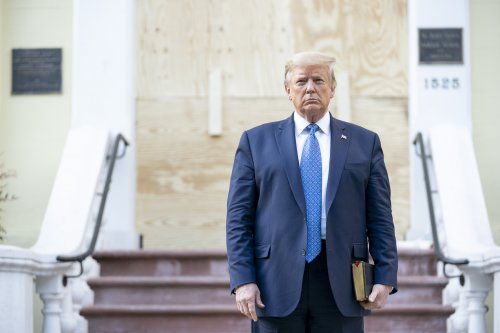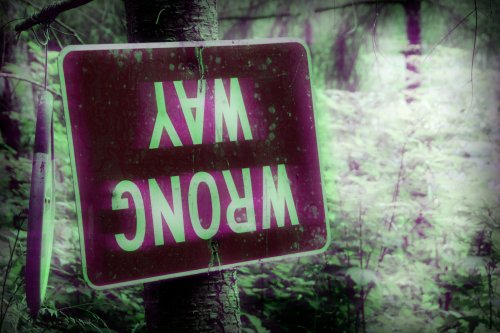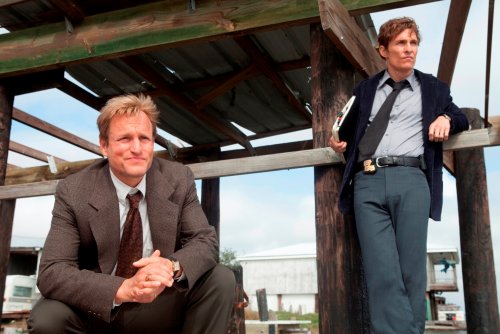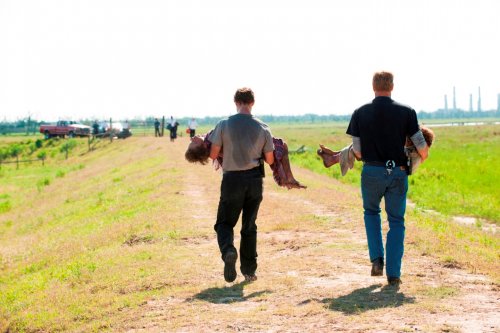According to the Kabbalistic teaching, to complete his work the messiah must descend to the very bottom of hell. He must find himself in the depths of the Sitra Achara, the dark and evil side of power ruled by the dark and black light, meorot, which, if you look at the arrangement of letters, the shape of the word itself, contains the word mot, or “death”. There, in the maelstrom of foul and malevolent matter, the messiah must perform a great act of repentance and salvation, rejection and exaltation, exile and glorification, suffering and grandness, that is extract or liberate sparks of light, crumbs of good imprisoned in the “shards” (kelippot) of ruin.
Such is, most simply put, the spiritual message of the American TV series True Detective, run by HBO from 12 January 2014 (the Polish premiere took place a day later). I regard this series as a masterpiece. And as a radical, restless – both in its spiritual framework and its formal shape – renewal of a rancid genre which is experiencing an unprecedented inflation in skilful and overabundant commercial productions.
Some facts
The creator and writer of True Detective is Nic Pizzolat, and the director of all eight episodes of the first season is Cary Joji Fukunaga.
The title is a deliberate although ironic reference to the first, already legendary American pulp fiction magazine devoted to real crimes (it was first published since 1924 as True Detective Mysteries, and since October 1939 to 1995 as True Detective). The series shows the, mildly speaking, convoluted story of two detectives, Rust Cohle (Matthew McConaughey) and Martin Hart (Woody Harrelson), unsuccessfully working on the case of serial ritual crimes committed against women and children in southern Louisiana in the mid-1990s. It also shows their return to the case – dropped in 2002 under drastic pressure of various circumstances and traumas – ten years later. The return somehow produces some success. And some salvation from evil, some moral revival.
But we do not get attached to the actors or characters. Or even to the story itself. At least not too much. For new seasons will bring completely new characters, new stories (but there is also talk of some unexpected comebacks, some glimpses of the original source).
Of course True Detective has its founding act, its mythical source – namely Twin Peaks by David Lynch and Mark Frost (1990-1991). It boasts of certain important predecessors, for example Elementary by Robert Doherty (2012-?), with a figuration of Sherlock Holmes as an eccentric junkie covered with tattoos, who overcomes his addiction and helps, along with his therapist Joan Watson, the New York Police Department in difficult investigations (but this series, which I at first regarded as better than Sherlock, fashionable among more snobbish petty bourgeois, has gone astray towards commercialism). Finally it has some decent factual bases – and even, in a sense, narrative models – in so numerous American documentary or semi-documentary series, which carefully, without embellishment and almost too painstakingly describe actual cases of crimes and investigations. After all, anything important is not born in a vacuum. But all these connections with these or other models from the past notwithstanding, True Detective is an autonomous work, unique in its difficult beauty.
Under a sky of the apocalypse
In fact, the plot of the first eight episodes also takes place in an autonomous and unique space, remote from the landscapes domesticated by American cinema, to which we are so accustomed.
This space is an unattractive, crippled and dreary landscape of Acadiana – south-eastern parishes of the Louisiana state (it is divided into parishes rather than counties and districts). It is a kind of post-apocalyptic land, affected on the one hand by the destructive and godless presence of man and on the other by the fatal work of nature itself, especially in the Bayou region, the Mississippi Delta, where its oxbow lakes form a large cobweb of waters – stagnant or slow-flowing – which are always kind of dead and morose, currents changing direction depending on the tides, waters crossing swampy, monotonous forests of bald cypresses. Also the northern part of this land – at least in the series – overwhelms with its monotony: it is a flat, post-industrial or post-agrarian landscape, numb under the grey and heavy rag of heaven hanging low over the hostile ground.
In True Detective the “King in yellow” will be – like Deus absconditus, hidden God of crime – the perpetrator of all evil, and the name of Carcosa, the city of darkness, despair, and death, will be repeatedly invoked, like a mantra.
In this world that there is no architecture to speak of, if you do not count the ruined schools, churches and factories, rotten wooden houses, poor favelas, a few blocks without distinction and charm, inhabited by lower middle class or intended for offices or pubs; dykes stretching into infinity, in the midst of dead fields or trading posts turned into nothingness. In fact, all these places of life – or rather subsistence – in this cinematic story are separated from each other like islands, like enclosed, isolated atolls, like vaulted, sinister cavities were some hellish things are always going on. This is above all a hell of loneliness and anaesthesia. A hell were death, suffering and crime, disloyalty and betrayal are a fundamental – if not the only – tissue of being. A place where the fundamental division into good and evil has almost completely disappeared and you live in such a way as if it had never existed in the first place. And as if individual existence, and with it all value of human perseverance, lost any meaning, evaporated into icy nothingness.
So the world of True Detective is a world were a relentless disaster has taken place, where a dissipatio humani generis has occurred – a complete, absolute “dissipation of the human species”, about which apocalyptic chapters of holy books tell us in stony words.
Residual Catholicism, a split voodoo
To some extent, of course, you can see a social or cultural palimpsest of this land “beyond good and evil”, although its pages have been viciously erased by some foul and brutal finger and some have been consumed by rot or eroded by the bitter rust of blood. But these are just phantasms of beliefs, peoples and cultures, wretched remains and afterimages – of things old and new.
On the one hand we have in this story some melancholy remnants of trashy American popular culture in the provincial edition, from pub tunes to itinerant preachers, and on the other hand we have spectres of beliefs and customs of the Cajuns. These eighteenth-century exiles from Canada (Acadia) and then from Haiti, most of whom inhabit – in wooden huts on piles – the swampy forests of Louisiana and use a dialect of French – sometimes considered a separate Romanesque language – full of Spanish, Italian or Red Indian accretions, speaking it within an English accent. However, they should not be confused with the Creoles, also mentioned in the film, because they are French and do not originate from Acadia or Haiti, use a quite different French dialect and usually are affluent city dwellers (currently also the local African-Americans are regarded as Creoles). Meanwhile the Cajuns are white trash – one of the varieties of the famous “Southern poor whites” – distrustful and uncouth, holding on to their perennial and miserable activities (agriculture, hunting, fishing or small craft) and to their increasingly “residual” and archaic Catholicism.
And this Catholicism is indeed bizarre, for it is not only residual and heavily syncretic, permitting, for example, the presence of traiteurs, healers curing people with their hands, but also spiced with the ecstatic and dark elements of “possession cults”: Haitian voodoo and – less familiar to universal culture – hoodoo, a worship of African origin, born in the slave-owning American South and consisting of a mixture of magic and faith of the blacks with Christianity, Judaism, and the spirituality and rituals of Native Americans.
We get many testimonies of that in True Detective, such as the strange contraptions made of branches or symbolic drawings (Veve), preceding ritual and relating to the loa, ghosts-gods, who put their followers in trance and overpower them (as people say, a “loa is riding his horse” then). Another example is the “voodoo dolls”, which in the American pop culture are understood as magical instruments of pain, bringing disease or death on the persons they represent. But in the Haitian voodoo – it should be noted here – they are placed on altars as representations of the loa spirits or puppets attached to trees on cemeteries for the purposes of communicating with the dead. And in the Louisiana (New Orleans-) voodoo – the said mixture of traditional voodoo and hoodoo – these dolls were originally, in the first decades of the last century, used as instruments of sympathetic, therapeutic magic (sticking pins in them was to strengthen the healing spell rather than cause suffering). With time, however, there came to a split within the Louisiana voodoo – a split into white magic (were the dolls are used to subtract pain, to help meditation and enhance spiritual power, to gain happiness and love), and black magic, combined with striking a pact with evil powers, bringing pain or death on other people (True Detective shows only the instances of the dark side, of the Sitra Achara, as Kabbalists would say).
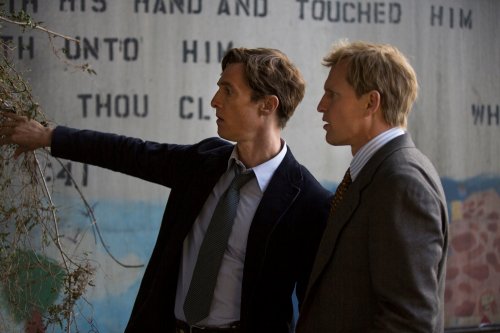
Detective trance
But the clear associations with voodoo and hoodoo refer to a much more important matter than just the undisguised presence of these cults of accessories and symbols in the series. Both detectives – as well as other people – constantly are in a kind of trance, they, so to speak, initiate themselves in the mysteries of serial and ritual crime in order to get to the heart of the matter, becoming like zombies, like ”living dead”, like “organic mechanisms” capable only of working. And they can achieve this state in many different ways: through absolute withdrawal from life and ”taking death upon themselves”, through drugs and almost animal sex, through a complete immersion in the investigation. So they do it in accordance with the folk superstitions about zombies – although these superstitions do not form an inherent part of the religious “core” of these cults, they are loosely related to them.
Pointing towards these murderous supernatural entities is also the lycanthropic theme of True Detective, combined both with dark legends about blood, and with the peculiar Catholicism of the Cajuns. For their religious tradition focuses on solemn celebrations of the last day of the Carnival, Mardi Gras, and on a strict observance of Lent. And according to a companion story, the role of which was to scare children into proper behaviour, a werewolf called Rougarou (Roux-Ga-Roux, Rugaroo or Rugaru) will kill a Catholic violating the fast. The name of this creature probably is a distorted combination of the French word loup (wolf) with the Frankish word garulf (werewolf), and according to Cajun beliefs it signifies a creature marauding in the Acadian swamps and the “Greater New Orleans”, with a human body and a head of a dog or a wolf. Rougarou is not is not a permanent bestial destiny of man – the evil spell overcomes a person for 101 days, during which he sucks human blood and kills, and then, after infecting another human being, returns to his original state. Other legends speak about the Rougarou as a headless horseman or a work of a witch, who either turns herself into it, or casts an appropriate curse on another person, becoming a wolf-cannibal.
The importance of the series True Detective is expressed in the fact that it quite mercilessly reaches to our intimate feelings, to our private horror, to our experience of the absurd and our dread of death.
The Rougarou tales are just one of the dark sources of True Detective. They provide an inspiration for the criminal rituals we experience – for we do experience them almost directly, almost physically – when watching this series. For its importance is also expressed in the fact that it quite mercilessly reaches to our intimate feelings, to our private horror, to our experience of the absurd and our dread of death. That – although ultimately bringing hope – it first plays with us just above the abyss, it first invokes hopelessness and despair.
In the heart of darkness
Another important source, this time invoked in True Detective without evasion (that is simply quoted literally), is a collection of stories by the American author Robert W. Chambers entitled The King in Yellow, first published in 1895. The eponymous “King in yellow” is the name of a fictional play forming a recurring motif in – if I am not mistaken – four of the these stories. The play is forbidden and cursed, it induces despair or madness in those who read it. And it is symbolised by a secret, sinister and deadly otherworldly entity- a monarch from the supernatural world, sower of crime and horror, dread and hallucinations. It is manifested only through disturbing symbols and behind the curtain of masks.
Chambers’ short stories became an inspiration for various works of popular culture, but here it is perhaps sufficient to mention that in 1927 Lovecraft read them and since that time allusions to “King in yellow” would constantly appear in his works, referring to various supernatural events, people and places, marked by incomprehensible horror.
Chambers himself was inspired by Ambrose Bierce’s short story from 1891 called “An Inhabitant of Carcosa”. However, while Bierce talks about this fictional – ancient and mysterious – city in a very general way, as something from the past, as a sign – practically existing only in the memory – that someone had lived there, in Chambers’ short story it achieves the rank of a site of power, destiny and death, located somewhere in the Hyades constellation. A place where “two suns set behind the lake”, where “shadows lengthen”, where “strange moons circle in the sky “. Where “black stars grow”, where “an assassination will tatter the King”. And the King “must die unexpectedly in the dark Carcosa”, “the defeated Carcosa”.
So in True Detective the “King in yellow” will be – like Deus absconditus, hidden God of crime – the perpetrator of all evil, and the name of Carcosa, the city of darkness, despair, and death, will be repeatedly invoked, like a mantra. We will also hear it when we finally reach – with both detectives – the depths of Sitra Achara, the heart of darkness, the terrifying mazes built by the killer Errol Childress (Glenn Fleshler), guided by his voice toward death: “Come inside, the little priest … Turn right, the little priest, following the bride, this is Carcosa”.
But darkness will not triumph, death will ultimately not prevail. Among the eternal night starlight will increase. And the messiah will finally achieve catharsis, unification and fullness due to him. For the two detectives in fact are not two separate characters: they are like two halves, first brought together by hostile struggle, a seemingly incomplete fight for unity through attempted domination. And initially tainted with all kinds of evil. So they are figurations of two opposing elements lurking in each of us: the ascetic, mystical, soulful, ironic element personified by Rust, and the sensual, materialistic, emotional, quite trivial element personified by Martin.
TV series:
True Detective, USA 2014.

